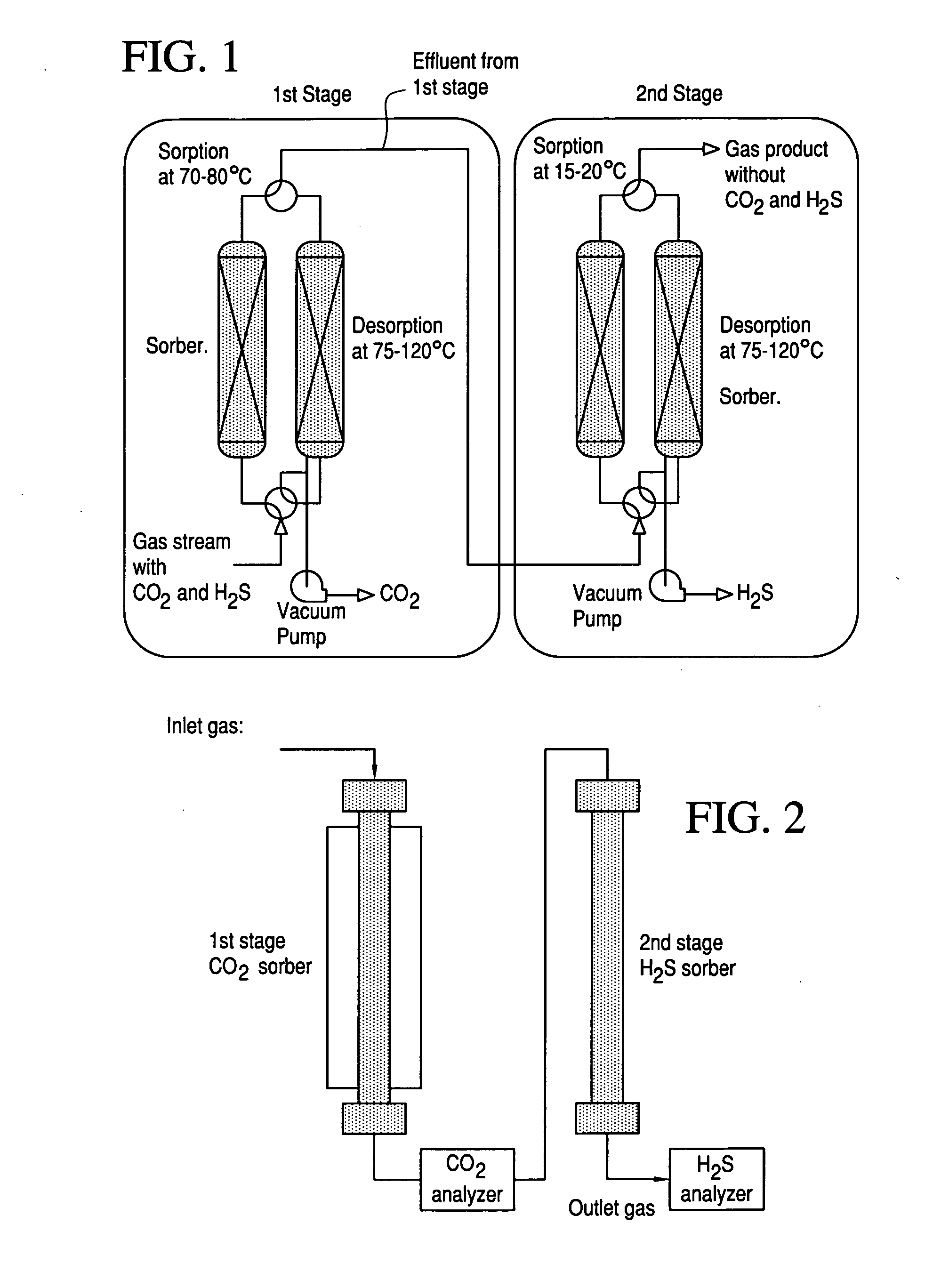Novel sorbents and purification and bulk separation of gas streams
- Summary
- Abstract
- Description
- Claims
- Application Information
AI Technical Summary
Benefits of technology
Problems solved by technology
Method used
Image
Examples
example 1
PEI(50) / SBA-15 (Loading 50 wt. % of PEI on SBA-15)
[0045]4.0 g of polyethylenimine (PEI) that has a molecular weight (MW) of 423 g / mol is dissolved in 32 g methanol at room temperature under stirring for 30 min to prepare an alcoholic solution of the polymer. Then 4.0 g of SBA-15 having an average particle size of 1 μm is added to the solution and stirred at room temperature for 8 h to produce a slurry. The slurry is further stirred in air at room temperature for 10 hr to produce a pre-dried sorbent. The pre-dried sorbent is placed into a glass column and dried at 100° C. under nitrogen (99.999%) flow of 100 mL / min for 12 h. The resulting sorbent has a BET surface area of 80 m2 / g and pore volume of 0.20 cm3 g−1 as measured by N2 physisorption at −198° C. in a Micromeritics ASPS 2010 surface area and porosity analyzer.
example 2
PEI(15) / SBA-15
[0046]The procedure of example 1 is followed except that 0.71 gm of PEI is used to yield 15 wt % loading of PEI.
example 3
PEI(30) / SBA-15
[0047]The procedure of example 1 is followed except that 1.71 gm of PEI is used to yield 30 wt % loading of PEI.
PUM
| Property | Measurement | Unit |
|---|---|---|
| Temperature | aaaaa | aaaaa |
| Temperature | aaaaa | aaaaa |
| Temperature | aaaaa | aaaaa |
Abstract
Description
Claims
Application Information
 Login to View More
Login to View More - R&D
- Intellectual Property
- Life Sciences
- Materials
- Tech Scout
- Unparalleled Data Quality
- Higher Quality Content
- 60% Fewer Hallucinations
Browse by: Latest US Patents, China's latest patents, Technical Efficacy Thesaurus, Application Domain, Technology Topic, Popular Technical Reports.
© 2025 PatSnap. All rights reserved.Legal|Privacy policy|Modern Slavery Act Transparency Statement|Sitemap|About US| Contact US: help@patsnap.com



